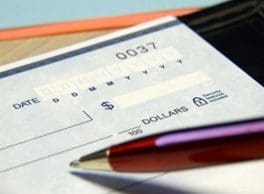Financial Fraud Is on the Rise. What Are You Doing to Prevent Financial Fraud from Happening to you?
- According to the Federal Trade Commission, consumers lost almost $8.8 billion due to reported fraud in 2022.
- This represents a greater than 30% increase from that of 2021!
What are some of these common types of financial fraud?
Imposter Scams

The most common type of financial fraud is imposter scams, which are where fraudsters portray themselves as someone they are not in order to obtain your personal information and then use it to steal your money. Oftentimes, fraudsters will identify themselves as a representative from a financial institution, such as a member of the fraud department, and create a sense of urgency to get you to divulge information, such as your account numbers, social security number, and answers to your security questions. In some cases, fraudsters are able to get information simply by using voice recognition software, meaning they may not even ask for specific personal information. In fact, it can take an approximately one-minute-long conversion to get enough data for a fraudster to make this strategy work.
Recently, these tactics have become more elaborate through the use of fake websites and phone numbers that appear to be that of a financial institution, which is likely contributing to the rise of financial fraud cases. Full-fledged “fraud teams” are often involved and will transfer you between fake departments to make the experience appear legitimate and to get as much information as possible.
Once the right information has been obtained, these imposters will call your financial institution and set up funds to be wired to their own account. Unfortunately for victims of these fraud cases, the bank is not always responsible, and funds are not always paid back.
Check Washing

Another type of financial fraud on the rise is one that has been in existence since the 1980’s and is known as “check washing”. According to one report, there was an 84% increase in check washing in 2022. This scheme takes place by stealing checks out of mailboxes and manipulating them one of two ways before depositing checks for their benefit:
- Certain information on a check, such as payee and amount, is changed by a fraudster using tools like photoshop.
- Using the stolen checks information, a counterfeit check is created by using the same account number but changing the payee, and sometimes the amount.
What steps can you take to prevent becoming part of this statistic in 2023 and beyond?
Prevent Imposter Scams:
- To confirm a person calling you is not a fraudster, ask for their name and extension, then hang up and call back the institution they claimed to be associated with.
- Never give out any personal information before verifying there is a trusted contact on the other end of the line.
- If it feels as if someone is keeping you talking on the phone without a meaningful purpose, hang up to avoid a fraudster using voice recognition software against you.
- Never click links or attachments from unfamiliar texts or emails.
- Regularly review your credit card, bank, and investment accounts for suspicious activity, such as unauthorized charges, new bank accounts being established, or unfamiliar changes to account balances.
- Create unique, complex passwords for each account and device and change them regularly.
Prevent Check Washing:
- Collect your mail frequently.
- Lock your mailbox, if possible.
- Shred voided checks.
Conclusion – Take action now to Prevent Financial Fraud from happening to you:
Taking action now to educate yourself on financial fraud and mitigate the associated risks can make all the difference. Take the above-mentioned action steps to keep your information secure and out of the hands of criminals.
It may be wise to reach out to a financial advisor if you have any questions about how to prevent financial fraud and how to make the most out of your financial life.